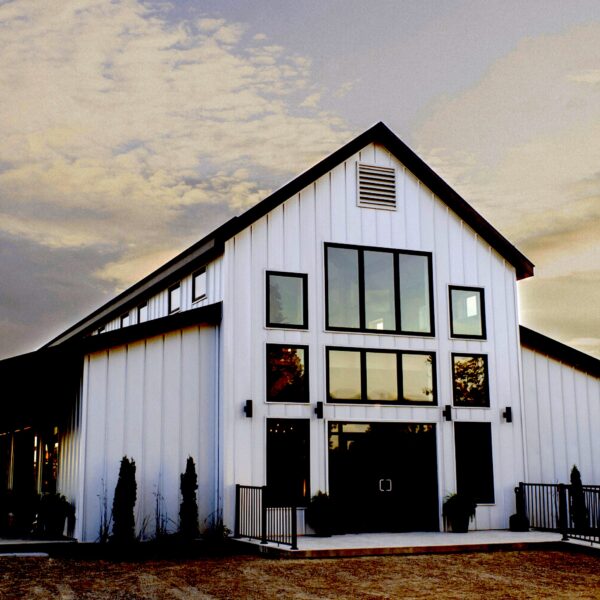FAQ
You’ve got questions about steel roofing and siding, we’ve got answers. We’ve have listed our most popular questions below. If you still have questions, please contact us toll-free at 1-888-556-7623.
- What are the advantages of steel roofing and siding over other types of roofing?
Metal is one of the most practical roofing materials on the market today and is offered in a wide variety of attractive colors and profiles with long-life coatings that do not support the growth of moss, mildew or fungus. Metal panels are lightweight yet strong enough to withstand severe weather. Your home will increase in value and you may even enjoy better rates on your home insurance. Metal roofing lasts longer, is better for the environment, conserves energy and requires virtually no maintenance. A metal roof is the last roof you will ever buy!
- How long will a metal roof last?
A metal roof could very well be the last roof you will ever put on your home, barn, shed or hobby shop—with life expectancies that can easily exceed 40 to 60 years. Corrosion resistant substrates and long-life finishes ensure long-term performance, minimal maintenance and energy cost savings.
Other roofing materials have varying degrees of wear and weather-related problems that lead to breakdown and replacement. Metal roofing by far outlasts these other materials by retaining its appearance and durability decade after decade after decade
- Does metal roofing cost more than conventional roofing?
Roofing materials are offered in a wide range of quality levels. Initially, metal roofing may cost slightly more than some other roofing types but the life cycle costs of metal roofing are substantially lower and most customers agree that the value it brings to their home far outweighs the difference in price. Traditional roofing materials have a limited life expectancy before the expense of repair and/or replacement is required. No matter what kind of metal roof you choose you should never have to worry about replacing it again.
- How can a metal roof save money on energy bills?
Metal roofing reflects the majority of the sun’s rays, so it doesn’t retain as much heat as wood, asphalt shingles, tiles, or cement. As a result, less heat is transferred into the building’s structure. This means a metal roof could help your attic stay cooler longer – leading to a significant reduction in your energy bills. Additionally, metal roofing offers an effect similar to R-11 insulation on top of the roof during sunny conditions.
- Isn't a metal roof noisy?
This is one of the biggest misconceptions about metal roofing. People tend to think of an old barn roof where the steel is visible to the interior of the structure and installed on an open frame. On a residence, the metal is often installed over a solid substrate. The attic space, insulation and drywall ceilings further serve as additional sound barriers. Research has shown that metal isn’t any noisier than other traditional roofing products.
- How well does metal roofing stand up to extreme weather?
A metal roof can withstand decades of abuse from extreme weather like high winds, heavy snow, hailstorms, and even wildfires.
The wind and uplift resistance of metal exceeds most building code requirements.
In areas with heavy snow, metal roofing has been the choice of homeowners for years. It easily sheds snow, which protects the structural integrity of the roof and can eliminate ice damming at the eves, so water can’t back up and collect under the roof causing a leak into your home.
While hail can cause serious damage to traditional roofing materials by breaking, splitting and causing tear-off damage, it cannot penetrate a metal roof.
In areas prone to wildfires, metal roofing can protect your home should burning embers land on your roof.
- Does a metal roof attract lightning?
No. A metal roof has no greater chance of being hit by lightning than any other type of roof. Lightning is attracted to the highest point, regardless of what that object is made of. A metal roof can actually be beneficial in the event of a lightning strike due to being a non-combustible material.
- Is snow a problem with metal roofs?
Snow can slide more easily off metal roofs, but this is simply handled by installing snow stops which come in a variety of aesthetically pleasing colours and styles. They can easily be installed where necessary to help break up snow and guard against potential snow fall damage and sliding onto traffic areas. Customers often just put a few snow stops in key areas.
- Can you walk on a metal roof?
Yes, but you should avoid stepping on the raised portions of the panel and as with any roof, care should be exercised.
- Can a metal roof be installed over my existing shingle roof?
For most profiles, yes. Installing a metal over an existing asphalt roof saves time and money because there is no old roof to remove and dispose of. This also helps protect our environment by keeping shingles out of the landfills.
- Is a metal roof environmentally responsible?
Not only is metal roofing great for your building, it’s great for the environment. From the production of the steel to the installation and reuse, a significant amount of recycled content is used with metal that is far superior to asphalt. In addition, a metal roof can often be installed over your existing roof, helping to reduce the billions of pounds of shingle waste that fill our landfills each year.
If you are installing a metal roof over an existing asphalt roof, strapping should be applied on top of the asphalt shingles. This will ensure your metal roof is installed on a solid, level surface and reduce abrasions.
- Are there many colours and profiles to choose from?
We offer 7 profiles and more than 20 colours that can be custom-formed to your exact building specifications. Several of our colours are only available at Havelock Metal. Visit our Products page for options.
- What gauge of steel do you offer?
Customers are often don’t realize that 24 gauge steel is actually thicker than 29 gauge. For roofing and siding projects, it depends on the profile, but they are typically offered in 24, 26 and 29 Gauge. When it comes to trim, you need durability and ease of installation, so we use 26 gauge steel.
- Should I be concerned that a metal roof is too heavy for my home or small structure?
On average, a metal roof weighs 50% less than an asphalt shingle roof, and 75% less than concrete tile, fiber cement shakes and slate. Weight on a structure is never an issue with metal roofing.
- Will metal roofing reduce my home insurance cost?
It varies with insurance providers, but in some cases, having a metal roof on your home will reduce your insurance cost. We recommend you contact your insurance provider to follow up on any potential cost savings that may be available to you.
- Can you give me an estimate?
One of our sales team members would be glad to provide you with an estimate and help answer your questions. For an accurate estimate, we need to know two things: (1) The profile of metal roofing you’d like for your building and (2) the shape and pitch of your building’s roof and/or the measurements of the area to be sided. If you aren’t doing the job yourself and need a contractor, we can provide you with the name and number of one of our Recognized Metal Specialists (RMS’s) in your area. These RMS’s are contractors Havelock Metal has identified that are very familiar with our products and have a proven track record of quality installments and high customer satisfaction.
- Do You Offer Delivery?
Absolutely! Our trained delivery representatives will bring your material right to your door step.
- How durable are the coatings and paint finishes on the steel?
Our pre-finished paint coatings are of the highest quality, specifically formulated for proven durability on exterior surfaces and designed for sidewall (vertical) and roofing (non-vertical) applications in the construction and manufacturing industry. High-tensile steel is coated with a 55% aluminium-zinc (GalvalumeTM) coating. A primer is then applied and finally a high quality baked-on colour finish. All coatings are then tested to make sure they meet a variety of parameters before they are shipped to us for custom manufacturing of roofing and siding profiles.
- What type of warranty does a metal roof carry?
We stand behind our supplier warranties which vary depending on the specific product, but typically cover 30 to 40 years. Should you experience an issue, Havelock Metal will work with the supplier to determine if the defect falls within the supplier’s warranty parameters. Provided this is the case, we will provide the replacement steel. We are happy to report that warranty issues are extremely rare.
- What types of payment do you accept?
Visa, MasterCard, certified cheque, cash and e-transfer.
- What is the difference between a linear foot and a square foot?
Measurements can be described in either linear feet or square feet, depending on the application of a measurement. Linear feet describe the length of an item, and square feet describe the area of an item.
Linear feet measure something in only one dimension. For example, when finding the length of a bedroom wall, measure from one corner to another and describe the length of the wall as 12 linear feet.
Square feet measure things in two dimensions, and one square foot measures one linear foot long by one linear foot wide. Measure the number of square feet in a rectangular room by measuring the length and width in linear feet and multiplying the results. For example, a room that measures 12 linear feet by 8 linear feet is 96 square feet.
Items such as carpets or fabrics may be sold either by the linear foot or the square foot. In this case, a linear foot is what you would get if you measured one foot away from the edge of the roll and cut all the way across. The linear foot would measure one foot wide by however long the roll is.
- Are special tools required for metal roof installation?
Metal roofing can be easily installed with standard hand tools such as a drill, hammer, metal snips, caulk gun, pliers, chalk line and tape measure. Cutting panels is best done with an electric shear attachment for your drill. Panels may be cut as well using a circular saw with a proper metal cutting blade.
- I'm concerned that a metal roof won't match my home and the roofing style in my neighbourhood.
Today’s residential metal roofing is made to look exactly like common roofing material – such as asphalt shingle, cedar shake, clay tile or slate roofing – only stronger and more durable. Click here to see metal roofing’s wide variety of styles, colors and patterns – there’s certain to be a style and finish to match your home and neighborhood.

Contact Us Directly
Didn’t find an answer to your steel roofing and siding question? Feel free to reach out to one of our knowledgeable specialists.
Get In Touch
